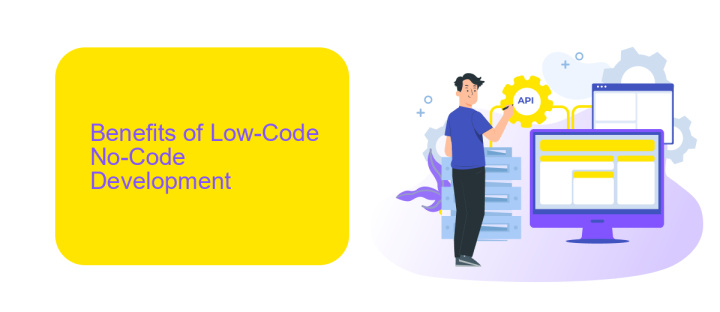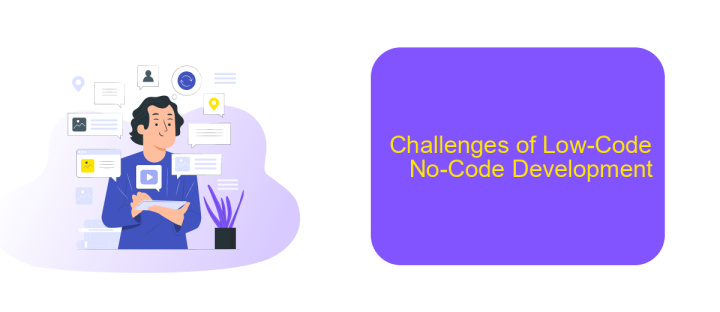Low-Code No-Code Developer
In today's rapidly evolving tech landscape, the demand for efficient and accessible software development solutions is higher than ever. Low-code/no-code platforms are revolutionizing the industry by enabling individuals with minimal programming knowledge to create robust applications. This article explores the role of low-code/no-code developers, the skills they need, and the transformative impact of these platforms on businesses and innovation.
Introduction to Low-Code No-Code Development
Low-code and no-code development platforms are revolutionizing the way software is created by enabling users to build applications with minimal hand-coding. These platforms provide visual development environments where users can drag and drop components to design their applications, making it accessible even to those without extensive programming knowledge.
- Ease of Use: Intuitive interfaces that simplify the development process.
- Faster Time to Market: Rapid prototyping and deployment of applications.
- Cost Efficiency: Reduced need for specialized developers.
- Flexibility: Easily customizable to meet specific business needs.
One notable tool in the low-code/no-code ecosystem is ApiX-Drive. This service facilitates seamless integrations between various applications, allowing users to automate workflows without writing a single line of code. By leveraging platforms like ApiX-Drive, businesses can streamline operations, enhance productivity, and reduce the complexity associated with traditional software development.
Benefits of Low-Code No-Code Development

Low-code and no-code development platforms offer numerous benefits, making application creation accessible to a broader audience. These platforms significantly reduce the time and cost associated with traditional software development by allowing users to design applications through visual interfaces and pre-built modules. This democratization of app development empowers business users, or "citizen developers," to create and deploy applications without requiring extensive coding knowledge, thereby accelerating the innovation process within organizations.
Additionally, low-code and no-code platforms enhance flexibility and scalability by enabling quick modifications and integrations. Tools like ApiX-Drive facilitate seamless integration with various third-party services, ensuring that applications can easily connect to existing systems and data sources. This integration capability not only streamlines workflows but also enhances the overall functionality of the developed applications. As a result, businesses can respond more swiftly to market changes and customer needs, maintaining a competitive edge in their respective industries.
Use Cases for Low-Code No-Code Development

Low-Code No-Code development platforms are revolutionizing the way businesses approach software creation by enabling users with minimal coding skills to build functional applications. These platforms are particularly beneficial for small to medium-sized enterprises (SMEs) and startups looking to streamline operations without extensive IT resources.
- Internal Business Applications: Companies can quickly develop custom internal tools such as CRM systems, project management applications, and employee onboarding systems.
- Customer-Facing Applications: Businesses can create user-friendly web and mobile applications to enhance customer engagement and service delivery.
- Automation and Workflow Management: Automate repetitive tasks and integrate various business processes to improve efficiency. Tools like ApiX-Drive help in setting up integrations effortlessly, connecting different services and automating workflows.
- Prototyping and MVP Development: Rapidly build and test prototypes or Minimum Viable Products (MVPs) to validate business ideas before full-scale development.
By leveraging Low-Code No-Code platforms, organizations can significantly reduce development time and costs while fostering innovation. These tools democratize software development, making it accessible to a broader range of users and enabling quicker responses to market demands.
Challenges of Low-Code No-Code Development

While Low-Code No-Code development offers numerous advantages, it also presents several challenges that developers and organizations must navigate. One significant issue is the potential for limited customization, as these platforms may not always provide the flexibility needed for complex, unique requirements.
Another challenge is the risk of vendor lock-in. When a business heavily relies on a specific Low-Code No-Code platform, switching to another solution can become complicated and costly. This dependency can limit innovation and adaptability in the long run.
- Scalability concerns: Some platforms may struggle to handle large-scale applications efficiently.
- Integration issues: Connecting with existing systems and services can be challenging, although tools like ApiX-Drive can simplify this process.
- Security risks: Ensuring data protection and compliance can be more difficult with Low-Code No-Code solutions.
Lastly, there is the challenge of skill gaps. While these platforms are designed to be user-friendly, they still require a certain level of technical understanding to use effectively. Organizations must invest in training and education to maximize the benefits of Low-Code No-Code development.
Future Outlook for Low-Code No-Code Development
The future of low-code and no-code development looks incredibly promising as businesses increasingly seek to streamline their operations and reduce dependency on traditional coding. These platforms empower non-technical users to create and modify applications swiftly, which significantly accelerates the development process. As organizations continue to adopt digital transformation strategies, the demand for low-code and no-code solutions is expected to rise, enabling quicker deployment and greater adaptability to market changes.
Moreover, the integration capabilities of low-code and no-code platforms are continually evolving. Services like ApiX-Drive are at the forefront, offering seamless integration solutions that allow businesses to connect various applications without extensive coding knowledge. This not only enhances productivity but also ensures that different systems work harmoniously. As these platforms become more sophisticated, we can anticipate even more advanced features, making it easier for businesses to innovate and remain competitive in a rapidly changing technological landscape.
FAQ
What is a Low-Code/No-Code developer?
How do Low-Code/No-Code platforms work?
What types of applications can be built with Low-Code/No-Code platforms?
Is it possible to integrate different software systems using Low-Code/No-Code platforms?
Are Low-Code/No-Code platforms suitable for enterprise-level projects?
Apix-Drive will help optimize business processes, save you from a lot of routine tasks and unnecessary costs for automation, attracting additional specialists. Try setting up a free test connection with ApiX-Drive and see for yourself. Now you have to think about where to invest the freed time and money!

